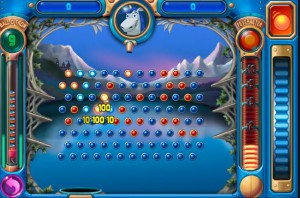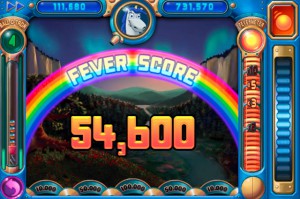Peggle: The Right Amount of Progress

Writing an article about PopCap Games’ Peggle is a dangerous proposition. After conquering my Peggle addiction a year or so ago, diving back in for “research purposes” has definitely brought back a flood of old memories. Peggle is one of the most addicting games that I’ve ever played, and there are a lot of reasons for that.
From a UX perspective, my absolute favorite part of the game is how it progresses at just the right pace. It’s a casual game, sure, so pacing doesn’t mean quite the same thing as it does in an RPG or an action title. But Peggle still knows how to drip you just enough of it’s gloriously sweet peg-busting action to keep you hooked for “just one more level”…
Peggle History
First, some history. If you aren’t familiar with the game, Peggle is modeled after the Japanese pachinko machine. You have a silver ball - like a pinball ball but smaller - that you shoot at a whole bunch of pegs. You want to hit all of the pegs of a certain color in as few balls as possible. Also, unicorns, rainbows, aliens, and dragons are involved.
Peggle Deluxe was originally released back in 2007 as a PC title (Steam link). That was back before the days of Apple’s App Store, but this game was built for mobile before mobile games were even a thing. Thankfully for us (but not for my productivity), since then the game has been released on pretty much everything from mobile phones to consoles and handhelds too.
(One Reason) Why Peggle is So Addicting
So here’s my favorite reason why Peggle is amazing: it progresses at just the right pace. Peggle’s Adventure mode (the story mode, basically) is broken into 12 stages. Each stage features a new power-up that has a huge impact on the game. One makes it easier to figure out where the ball will bounce, another produces a big ball of fire that goes right through the board, and another adds pinball-like flippers onto the screen to keep the ball in the air longer. Each of these power-ups is game-changing enough that to be successful, the player really needs to plan their strategy around it.

Each stage consists of 5 boards/levels. That’s exactly the right number - not too few so the player can’t get a hang of the power-up, but not too many that it gets repetitive. The first couple boards are spent getting familiar with the new special ability, the middle boards for honing the strategy, and by the last one the player is a peg-dominating machine with a good grasp on how to maximize their success. Any more or any less boards on a stage wouldn’t be nearly as good.
After Peggle’s Adventure mode is over, there is still plenty to do - high score hunting, challenges, multiplayer modes, not to mention the sequel Peggle Nights. By the time the player makes it through all of the stages, pacing doesn’t matter, because it’s way too late for them to escape the addiction.
Conclusion
If you’re building a casual game, PopCap’s Peggle is absolutely one to emulate. The pacing the game offers feeds the “just one more level” mentality by offering small bites of consistent, predictable action with one game-changing tweak with every new stage. If you’re building another game that’s equally as good, just don’t tell me about it - I can’t handle having two Peggles on my phone!

